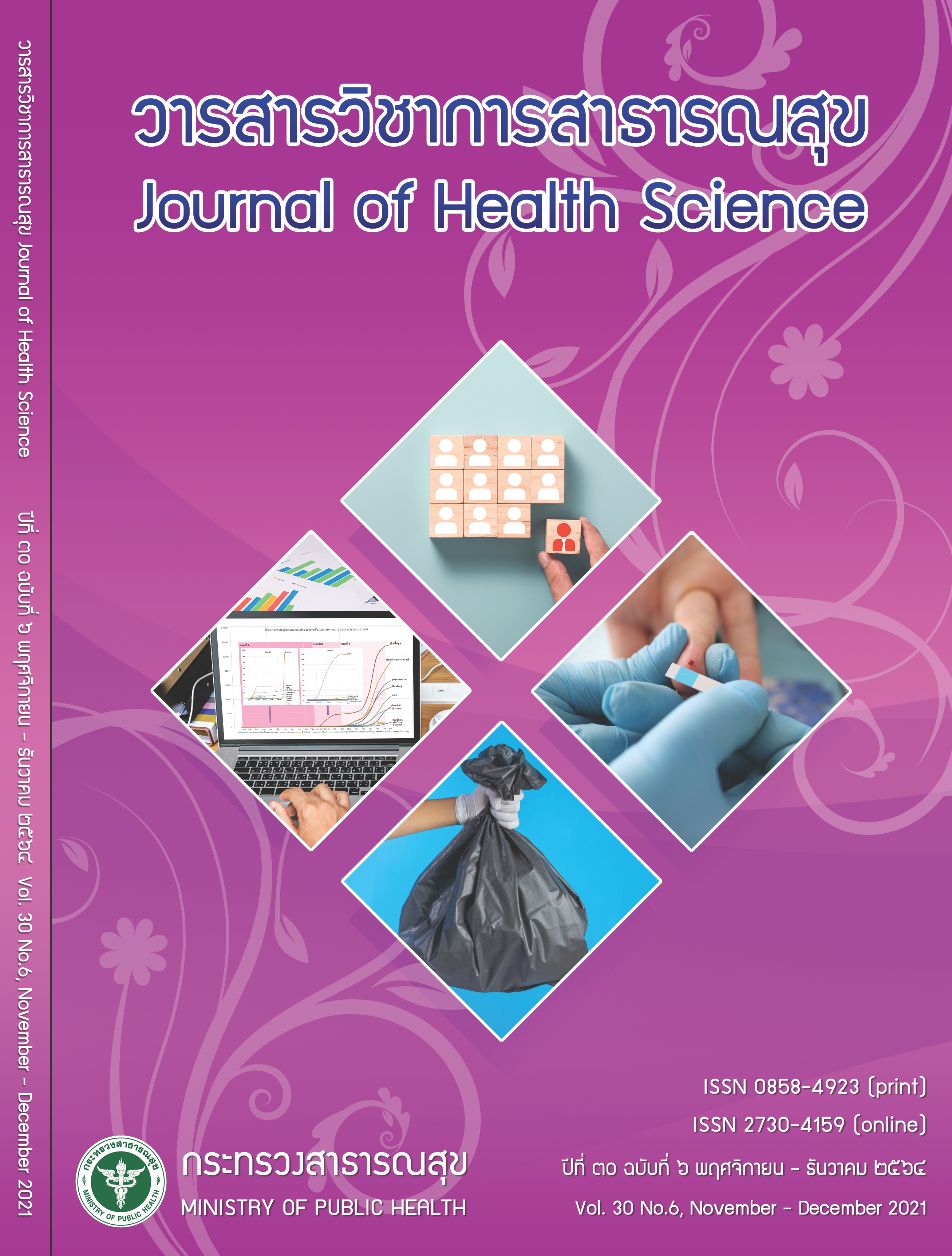Factors Associated with Impaired Fasting Glucose and Impaired Glucose Tolerance for Screening of Pre-Diabetes in Thai Adults in Samut Sakhon Province
Keywords:
screening, risk factor, prediabetes, impaired glucose, oral glucose toleranceAbstract
Identification of individuals with prediabetes is an important step in a high-risk approach to prevent and delay diabetes incidence. Using fasting plasma glucose (FPG) for diabetes screening could identify individuals with impaired fasting glucose (IFG) but miss those with impaired glucose tolerance (IGT). This study aimed to examine factors associated with IFG, IGT and combined IFG/IGT. Data from a community screening program to identify individuals with high diabetes risk using both FPG and oral glucose tolerance test (OGTT) inSamutsSakhon were analyzed. Of 969 individuals screened, there were 11.9% for diabetes, and 28.7% for prediabetes. Among those with prediabetes, 5.7%, 16.2% and 6.8% were classified as isolated IFG, isolated IGT and combined IFG/IGT, respectively. The use of only FPG or OGTT missed 56.5% and 19.8% of prediabetes cases, respectively. Factors associated with isolated IFG include male gender, hypertension and family history of diabetes. Obesity defined as BMI >27 kg/m2 and hypertension were independently associated with isolated IGT and abdominal obesity was associated combined IFG/IGT. Others associated factors of combined IFG/IGT were male gender, age of >50 and hypertension. Moreover, BMI of >27 kg/m2 , abdominal obesity and hypertension were factors associated with all impaired glucose. Therefore, individuals with obesity or abdominal obesity or hypertension having normal FPG may require OGTT to improve the detection of prediabetes.
Downloads
Downloads
Published
How to Cite
Issue
Section
License

This work is licensed under a Creative Commons Attribution-NonCommercial-NoDerivatives 4.0 International License.







